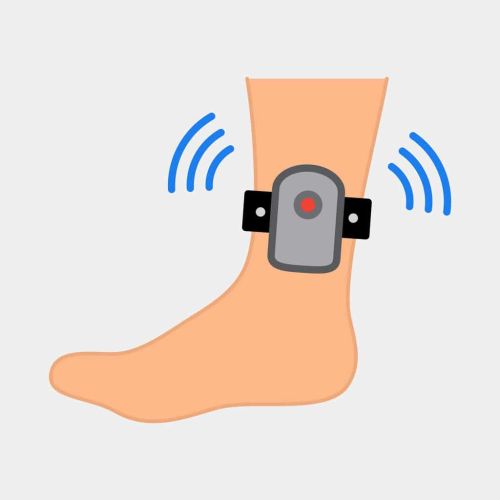What to Know About Electronic Home Monitoring Devices and DUIs

Washington State has some of the strictest DUI laws in the nation — a jail sentence can be imposed for any DUI conviction, even a first offense. However, due to the pre-existing system-wide problem of jail overcrowding, Electronic Home Detention is now regularly used as a punishment in many DUI cases. An individual who receives the penalty of electronic home monitoring serves all or part of their jail sentence in detention in their own home, but they are also permitted to go to work at regulated times.
What is Electronic Home Detention?
Rather than be sentenced to time in jail, a judge may order home detention for an individual who has been convicted of a first offense DUI. In such cases, the individual is sentenced to wear an electronic home monitoring device, ankle bracelet, or wristwatch-like device — and ordered to remain confined to an area in and around their house.
Although the requirements of a DUI house arrest are strict, it doesn’t always mean that an individual must remain in their home all day, every day. There are certain reasons a person may be permitted to leave their home. For instance, doctor’s appointments, substance abuse counseling, work, and school may all be considered valid reasons. Nevertheless, it’s crucial to ensure the reason for leaving home is approved by the court.
Who is Eligible for Electronic Home Detention?
Home monitoring might seem like a desirable alternative to spending time in jail, especially for a person with no prior DUIs. However, under RCW 46.61.5055, the minimum jail time is either one or two days in jail for a first DUI, depending upon the breath test result and other factors. While an individual with no prior offenses may ask to serve their jail time on electronic home detention, it’s important to understand that if that request is granted, fifteen days of home monitoring must be served for every one day of jail that would otherwise be served. In other words, two days of jail is served as thirty days of home detention.
It’s important to be aware that the option of serving electronic home detention instead of jail time may be imposed by the judge’s order on sentencing whether the defendant wants it or not. For anyone with a prior DUI offense within seven years of the current incident, electronic home monitoring is mandatory and follows a period of incarceration in “real” jail. A person with one prior conviction whose breath test is under .15% will serve thirty days in jail followed by sixty days of home detention as a minimum sentence. The sentence increases to 45 days in jail and 90 days of electronic home detention for a BAC of .15% or more, or a breath test refusal.
For a third DUI within seven years, an individual will be sentenced to a minimum of 90 days in jail, followed by 120 days of electronic home detention. The penalty increases to 120 days in jail and 150 days of house arrest in cases where the BAC reading is .15% or more. Critically, a judge may impose a sentence up to the maximum — 365 days in jail and a $5,000 fine — in any case.
What Kind of Electronic Home Monitoring Equipment is Used?
There are several different types of electronic home monitoring equipment that can be used following a DUI conviction. Many new monitoring devices use voice recognition technology and GPS to monitor and report the detainee’s exact location twenty-four hours per day. Some home monitoring devices also contain testing mechanisms which allow the court to monitor whether the individual is complying with a court order to abstain from alcohol.
Electronic home monitoring that may be ordered in a DUI case can include the following:
- Secure Continuous Remote Alcohol Monitoring (SCRAM)
- GPS tracking
- GPS monitoring
- Electronic ankle monitoring
Electronic home monitoring devices send updates to a probation office. If the detainee is not within a prescribed distance from the home base or has exceeded the breath test alcohol limit, a “violation” is recorded and reported automatically to the probation office. A violation of home detention conditions will likely result in the jail time originally imposed being served as “hard time” in a traditional jail facility.
The cost of the monitoring system is the responsibility of the detainee, who “rents” the equipment and pays the probation department for monitoring compliance. The fee can run from several hundred dollars to much more, depending upon the length of the required home detention.
Contact an Experienced Washington DUI Attorney
Electronic home monitoring will likely grow in use as the technology increases in sophistication, decreases in price — and the penalties continue to increase for a DUI conviction. If you are facing DUI charges, it’s best to have an attorney on your side to help you navigate the DUI Process in Washington. Providing effective representation and adept advocacy, the Fox Law Firm PLLC has been achieving favorable results on behalf of clients since 1985. Contact Attorney Jon Fox for a free consultation by calling (425) 584-6733.


